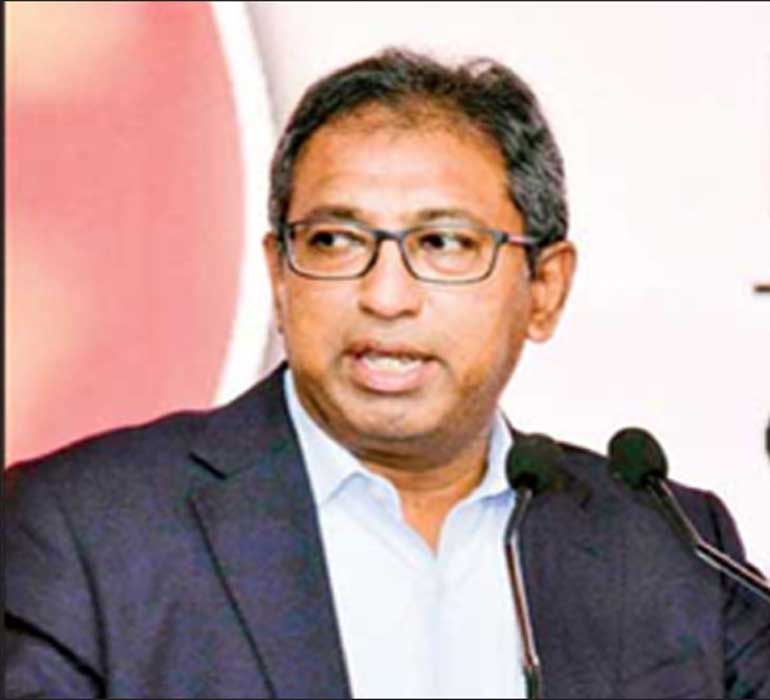Friday Dec 05, 2025
Friday Dec 05, 2025
Friday, 22 August 2025 00:22 - - {{hitsCtrl.values.hits}}

Economist Dr. Harsha De Silva MP
 At a recent SME forum, Dr. Harsha de Silva proposed an approach to support Sri Lanka’s small and medium enterprises (SMEs) by creating a dedicated long-term credit facility by tapping into domestic provident funds. He underscored a critical challenge facing Sri Lanka’s financial sector: the collapse of the traditional development banking model following the country’s transition to middle-income status.
At a recent SME forum, Dr. Harsha de Silva proposed an approach to support Sri Lanka’s small and medium enterprises (SMEs) by creating a dedicated long-term credit facility by tapping into domestic provident funds. He underscored a critical challenge facing Sri Lanka’s financial sector: the collapse of the traditional development banking model following the country’s transition to middle-income status.
Historically, Sri Lanka’s development banks—backed by concessional funds from multilateral agencies such as the World Bank and Asian Development Bank (ADB)—played a pivotal role in financing long-term projects, especially for Small and Medium Enterprises (SMEs). These institutions provided affordable, extended-term loans that fuelled growth and innovation. However, after Sri Lanka’s graduation to middle-income status, concessional funding ceased, forcing many development banks to transform into commercial banks. This shift has sharply reduced the availability of long-term financing, leaving a significant gap for SME funding. Dr. de Silva argues for a fundamental rethink of development banking, noting that it is not limited to specialised institutions but is an approach any bank can adopt—provided it has access to long-term capital. Without such funding, banks remain constrained to short-term lending, which restricts SMEs from undertaking larger, growth-oriented projects.
To bridge this gap, he proposes tapping into domestic long-term funds—particularly the Employees’ Provident Fund (EPF) and Employees’ Trust Fund (ETF)—which together hold over Rs. 5 trillion in assets. Currently, the EPF invests about 95–96% of its assets in government securities and the ETF follows a similarly conservative strategy, with minimal exposure to higher-return investments such as equities.
“I’m not suggesting that Provident Funds should take undue risks,” Dr. de Silva explained, “but if a small, carefully managed percentage of these long-term funds could be allocated to a dedicated SME credit facility, banks would be able to extend development loans on a truly long-term basis.” Such a mechanism, he contends, could revive the country’s development finance capacity, unlock SME growth, and ultimately generate broader economic and employment benefits.
EPF/ETF funds
The Sri Lankan Government uses the EPF (Employees’ Provident Fund) and ETF (Employees’ Trust Fund) money for financing its operations via government securities. Typically, these funds are supposed to be managed to provide retirement benefits to employees, and the Government or the respective funds’ management may undertake activities such as investment in various sectors, policy adjustments, or issuance of payouts. Shifting a small percentage of these funds through a long term financing instrument to commercial banks for long term low cost financing is a good idea but will require close monitoring by the regulator to ensure the directed lending is complied with by the commercial banks. Also banks can be asked to issue long term debt instruments ideally over 15 years where the two funds EPF and ETF can be told to invest.
Harsha’s idea is certainly worth looking at professionally by the CBSL or the proposed Debt Management Office to examine the viability given that his suggestion would have been vetted prior to making a public statement. Whether the vehicle is a dedicated or specialised development bank or any commercial bank with an appetite for development credit to SME’s, the core guiding principles of such lending, should be rigidly observed. An example is that single client exposure be limited. Large ticket credits must not benefit from the risk that the EPF/ETF takes. Industries and projects with state or treasury subsidies too should not be beneficiaries of the national retirement funds risk. Commercial Banks with their obsession with transaction costs as a percentage of interest yield, should have the appetite to engage in real SME lending.
The headline reason for the exit of Development Banks in Sri Lanka was the absence of multilateral concessionary funds. The DFI funds replaced this source not long before that happened, though these funds came with strictly monitored usage conditions. The Development Banks had been leveraging their low funding costs to gradually move into the turf of the commercial banks with larger ticket deals and the multilateral lines dried up on the ostensible reason of middle income status graduation. Given the need to address the lack of low-cost, long-term financing to revive the sector in the wake of COVID and the bankruptcy, it may be worthwhile to undertake a review.
Reference:
https://www.ft.lk/business/Harsha-proposes-export-focused-diplomacy-and-SME-credit-facility-using-EPF-ETF/34-780193
https://youtu.be/oiFiMovdvJ8